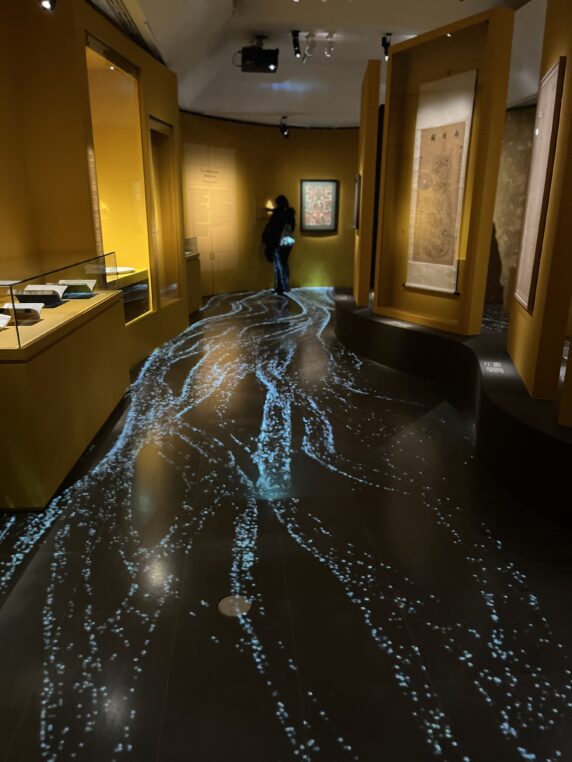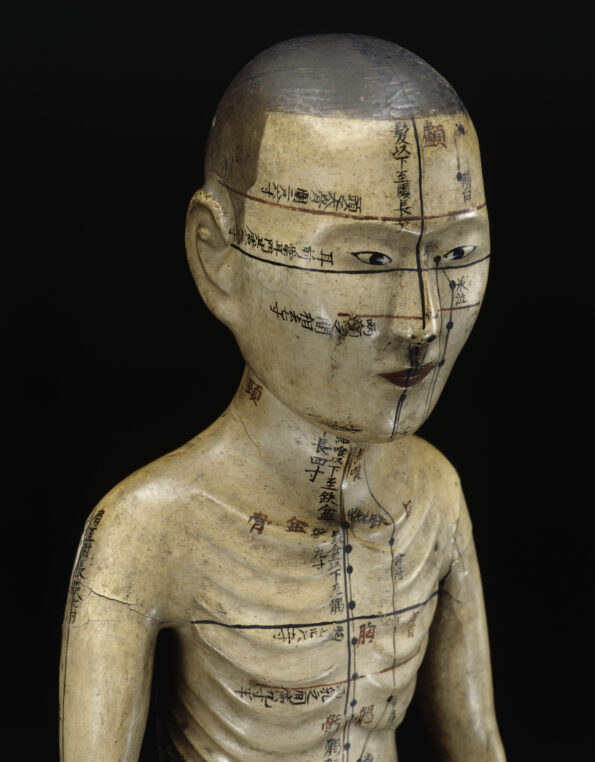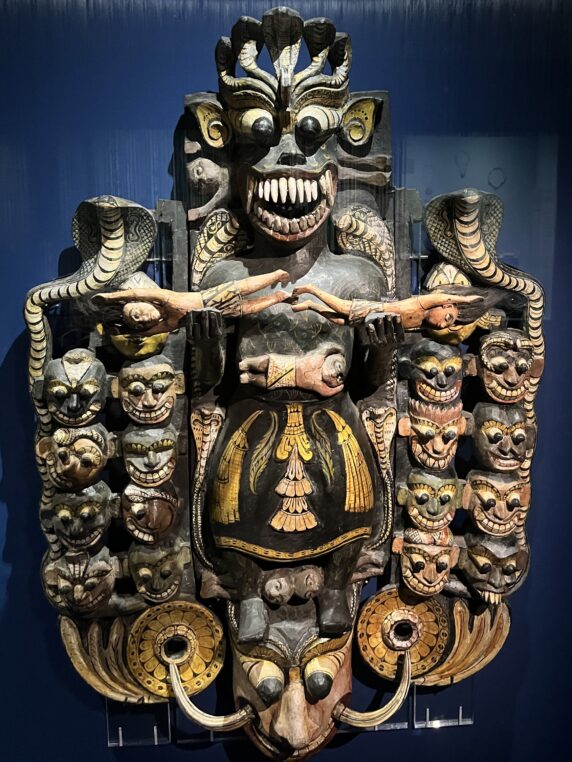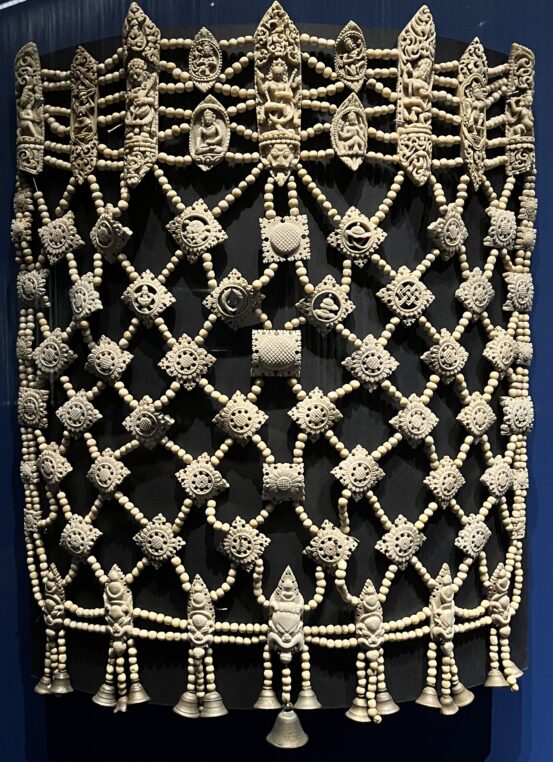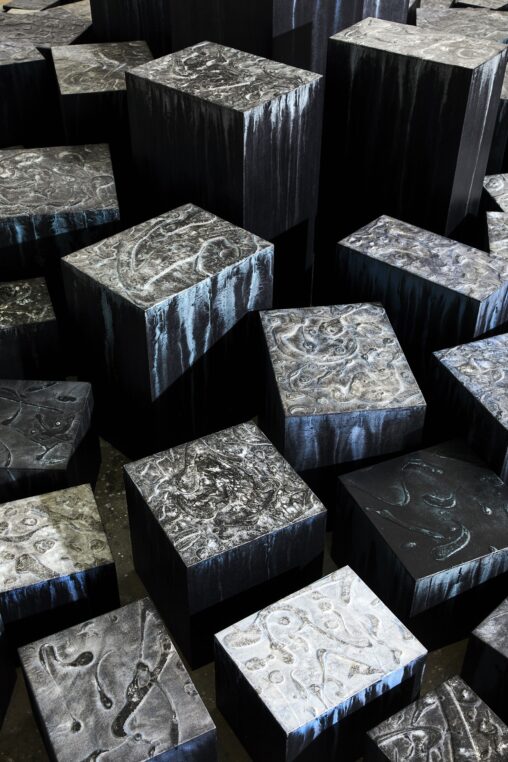Once again, Yannick Lintz, the unique President of Musée Guimet, surprised us in shocking pink with orange training shoes. She insisted in her presentation of the new exhibition “Médecines d’Asie” (Medicine from Asia), on her wish to attract everyone into the museum, not just people who like Asian art. For a new visiting experience, the scenography for this beautiful and fascinating show includes a meditation room, with music and the voice of Matthieu Ricard, a French Tibetan monk, and lovely curtained alcoves as well as an installation with lights, which alludes to the circulation of the fluids in the body. It is playful and goes deep into the understanding of yoga and acupuncture.
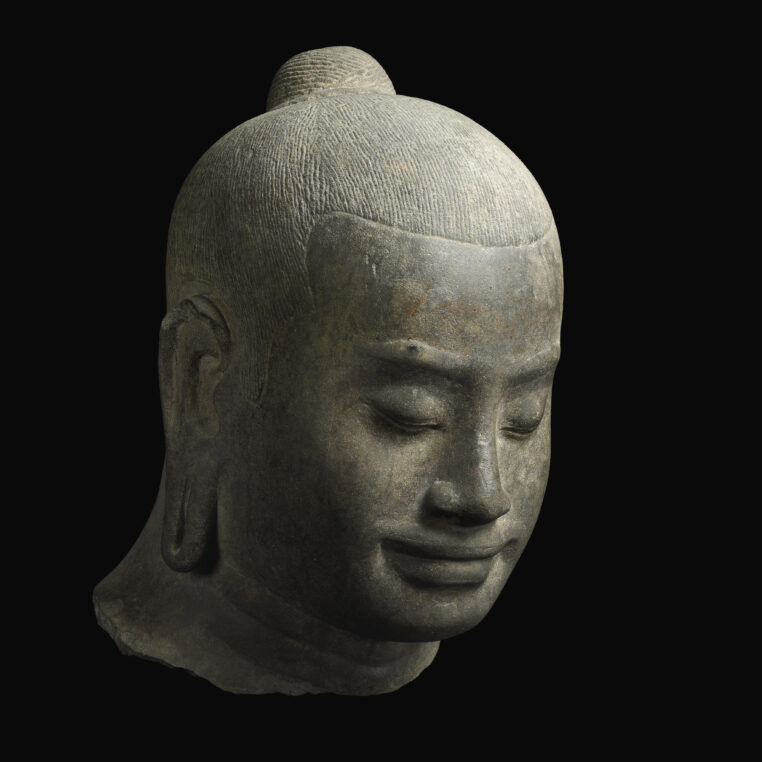
Portrait of King Jayavarma VII, founder of many hospitals in Cambodia, Angkor, Ta Prohm, end of 12 th century, Paris musée Guimet
This is not a scientific exhibition, it is an artistic choice of medical objects, sculptures and paintings, which often have never been exhibited and were taken out of the reserves. Many pieces were also lent by Musée des Confluences in Lyon and Musée du Quai Branly. The idea came originally from one of the three curators, Aurélie Samuel, and it is resolutely modern and mainstream. Acupuncture, yoga, meditation are strong in Occident and the public should be very excited by this summer exhibition on how to cure our diseases and learn about our body. As early as the 18 th century European travelers brought back medical treaties from India and China and Jean Baptiste Sarlandière, for instance, who was a doctor in the Napoleonic army and later at the Salpêtrière in Paris, wrote a memoir on electro-puncture, a new efficient way of treating gout.
The show is in three parts, the history of medicine in India, Japan, Korea and Tibet in the 7 th century. This science is linked to religion and to the Buddha of medicine. For both the practitioner and the patient, it coexists with other therapeutic, empirical or magical religious practices which may offer a remedy of illness. In China, the concept of the “vital force” or qi, is illustrated with twelve interconnecting channels or meridians which correspond to twelve main organs. The earliest written examples of medicine in China date back to the end of the second millennium bc. The three therapies used are heat therapy (moxibustion), needles (acupuncture) and drugs (phamacotherapy). There is a God of remedies whom one prays to.

Yakushi-nyorai, Master of remedies, Japan, 18 th-19 th century, Paris Musée Guimet (The Buddha holds a bowl with medicine and antidotes in his left hand)
In Angkor from 1181 to 1220, the presence of ancient Khmer hospitals is well document. They were built throughout the Empire and steles were inscribed with a carefully detailed inventory of staff, as well as the treatments given. A section is devoted to protective clothes and includes may children clothes and shoes.

Baby boots and shoes decorated with tiger themes, China XX th century, Musée Guimet, collection Krishna Riboud and Musée des Confluences Lyon, Collection Dautresme
While in the 17 th century, European medical treatises were translated in Chinese, in 1868, the opening up of Japan facilitated the development of Western medicine across the archipelago notably with the creation in 1875, of the Tokyo Institute of Pharmacology and Pharmacy. Yannick Lintz and her three curators have managed to link ancient Asian art to contemporary love for yoga, Ayurveda medicine and meditation, so this show should please many members of the public for various reasons, aesthetical, well being as well as medical.
In parallel, a “carte blanche” is offered to Park Dong-Soo, the Korean artist who presents canvases and cubic sculptures in the rotunda on the 4th floor. She spent fifteen years in a hermitage in the Haemi region and is part of the monochrome Korean movement called dansaekwa. Here she delivers “Cette place-là”, a spiritual map of the cosmos with black and white paintings and 207 painted wooden sculptures.
Musée Guimet until September 18.
Share this Post
